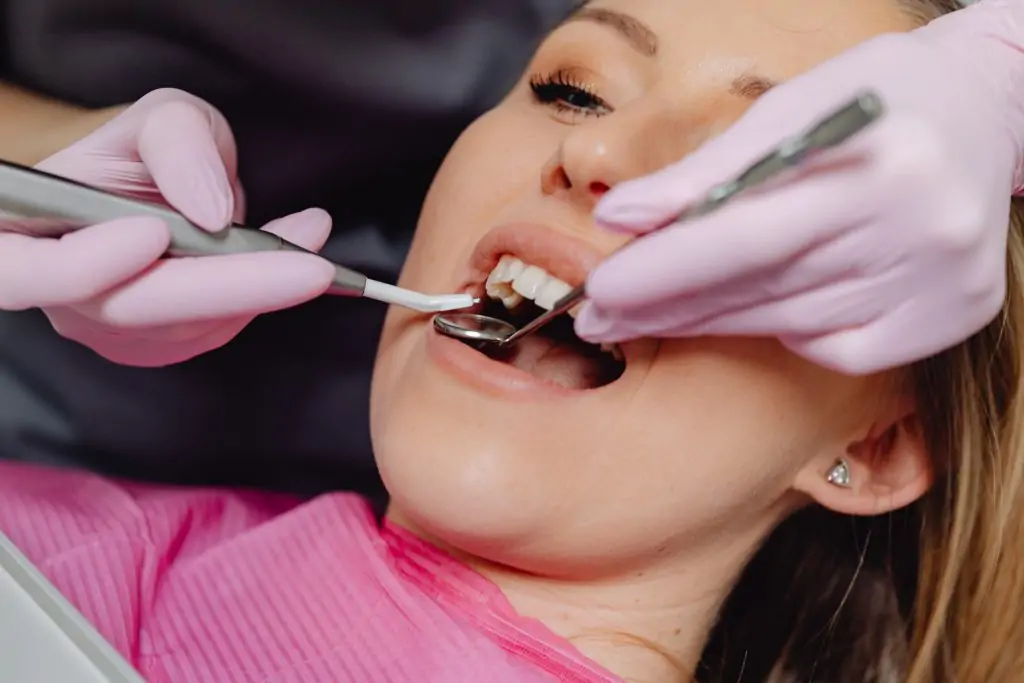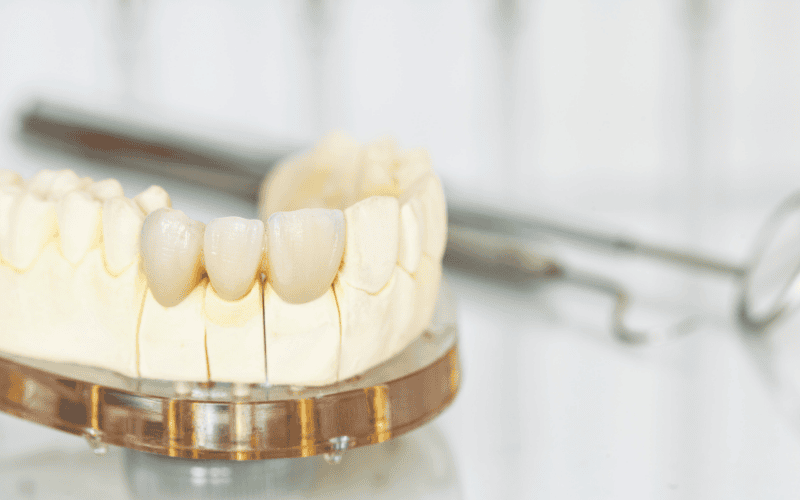
Introduction to Dental Crowns
Dental crowns are a fundamental component in modern dentistry, offering both restorative and aesthetic solutions for teeth that have been compromised. A crown is essentially a custom-made cap precisely designed to fit over a damaged or decayed tooth. Its primary purpose is to restore the tooth to its original form, function, and appearance, effectively safeguarding the tooth’s structure and integrity.
Crowns serve a dual purpose. On the one hand, they are crucial in restoring a tooth that has been weakened, perhaps due to decay, fracture, or following a root canal treatment. Such teeth often lose much of their structure and strength, making them vulnerable to further damage. A crown reinforces these teeth, providing the necessary support and protection to prevent future complications.
Initial Dental Consultation in Edmonton
Your journey begins with a consultation. Here, dentists in Edmonton assess your oral health, potentially using X-rays to evaluate the condition of your teeth and gums. This step is crucial to determine the suitability of a crown and to plan the procedure.
During this initial appointment, the dentist conducts a comprehensive examination of your oral health. This typically involves a thorough check of not just the tooth in question but also the surrounding teeth and gums. The goal is to get a complete picture of your oral health to ensure that a crown is indeed the most appropriate solution for your dental needs.
A key part of this consultation often includes taking dental X-rays. These X-rays are crucial as they provide the dentist with detailed insights into the condition of the tooth’s roots and the bone surrounding it. This information is vital, especially if there’s a possibility of underlying issues such as decay or infections that might need addressing before proceeding with the crown.
Additionally, this consultation is an opportunity for patients in Edmonton to discuss their expectations and concerns. Factors such as the desired appearance of the crown, material preferences, and budget considerations are important topics. The dentist can provide options based on these discussions, ensuring that the patient’s needs and expectations are aligned with the treatment plan.
Tooth Preparation: The First Practical Step
Tooth preparation is pivotal. The dentist reshapes the tooth to create adequate space for the crown. The extent of reshaping depends on the type of crown and the condition of your tooth. In cases of severe damage, the tooth may need to be built up with a filling material.
Taking Impressions and Placing a Temporary Crown
Post-preparation, the dentist takes impressions of your tooth. These molds are crucial as they serve as a template for the permanent crown. While this is being prepared in a lab, a temporary crown is placed to protect your reshaped tooth.
The Creation of Your Crown
In a dental lab, skilled technicians in Edmonton use the impressions to craft your crown, ensuring it matches your natural teeth in shape, color, and size. This customization is key to ensuring that your crown fits seamlessly with your natural teeth.
The Fitting Appointment
Once your crown is ready, you’ll return to the dentist for a fitting. During this visit, the temporary crown is removed, and the permanent one is placed for a trial fit. The dentist checks for color match, bite alignment, and overall comfort, making any necessary adjustments.
Cementing the Crown: A Permanent Solution
The final step involves permanently cementing the crown onto your tooth. This process is crucial in ensuring that the crown stays in place and functions like a natural tooth.
Post-Procedure Care and Advice
After the crown is placed, your dentist in Edmonton will provide detailed care instructions. This includes advice on oral hygiene practices to maintain the crown and the health of surrounding teeth.
Regular Dental Check-Ups
Routine dental check-ups are essential for the long-term success of your crown. Your dentist will monitor the crown and your overall oral health, making adjustments or repairs as needed.
The Role of Crowns in Overall Dental Health
Dental crowns play a vital role not just in restoring individual teeth but also in maintaining overall oral health. They help prevent further decay or damage to the tooth, contributing to a healthier mouth.
- Restoration of Damaged Teeth: Crowns are primarily used to restore teeth that have been damaged due to decay, fracture, or wear. By covering the entire visible portion of the tooth, they restore its original shape, size, and functionality, allowing for normal eating and speaking.
- Protection Against Further Decay: By encasing a damaged or decayed tooth, crowns act as a barrier against further decay. They protect the underlying tooth from external factors, such as bacteria and food particles, that can exacerbate the condition.
- Supporting Weakened Teeth: Teeth that have been weakened by extensive dental work, such as root canal therapy, are susceptible to breakage. Crowns provide the necessary support and reinforcement to these teeth, thereby prolonging their lifespan and preventing further dental complications.
- Improvement in Bite and Chewing Ability: A misaligned bite can lead to various problems, including jaw pain, uneven wear on teeth, and digestive issues due to improper chewing. Crowns help in correcting bite issues by bringing teeth back to their proper shape and size. This adjustment leads to an even distribution of bite force across all teeth, reducing the risk of damage to other teeth.
Understanding Different Crown Materials
In Edmonton, several materials are available for crowns, including porcelain, ceramic, gold, metal alloys, and zirconia. Each material has its advantages, and your dentist will help you choose the best option based on your specific needs and preferences.
Conclusion: Embracing Your New Dental Crown
Getting a dental crown in Edmonton is a testament to advanced dental care. The procedure is a blend of art and science aimed at restoring the functionality and aesthetics of your teeth. By understanding the process and following your dentist’s advice, you can ensure the longevity and success of your dental crown.




